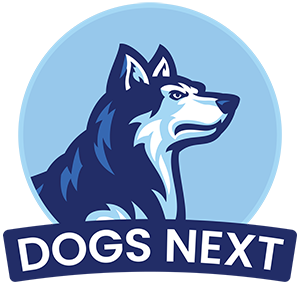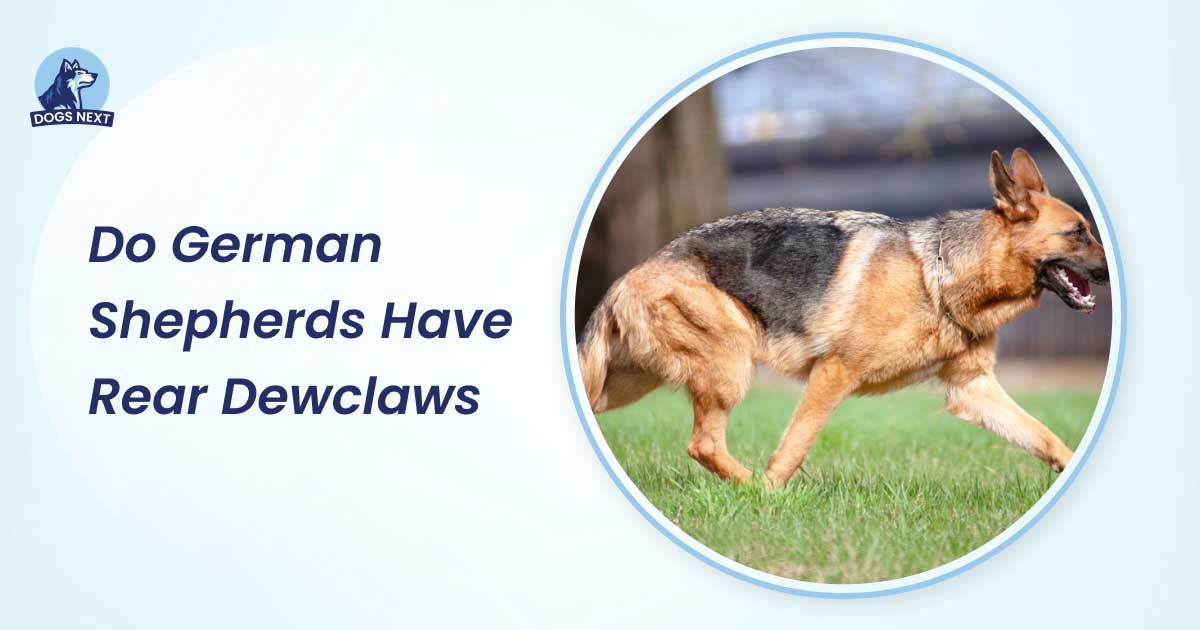Yes, German Shepherds do have rear dewclaws, but it’s not common. Rear dewclaws in German Shepherds are rare and often considered a genetic anomaly.
German Shepherds are known for their strength, intelligence, and versatility. These traits make them popular pets and working dogs. One interesting aspect of their anatomy is dewclaws. Dewclaws are the small, thumb-like toes on the inside of a dog’s legs.
While most dogs have front dewclaws, rear dewclaws are less common. In some breeds, rear dewclaws are a standard feature, but in German Shepherds, they are unusual. Understanding whether your German Shepherd has rear dewclaws can help in proper grooming and care. This knowledge is essential for every German Shepherd owner.
Understanding Dewclaws
Do German Shepherds have rear dewclaws? This question often arises among dog owners and enthusiasts. Understanding dewclaws is essential to answer this question. Dewclaws are unique features found in many dog breeds, including German Shepherds. Let’s dive deeper into the anatomy of German Shepherds and the presence of dewclaws in these magnificent dogs.
What Are Dewclaws?
Dewclaws are small, extra toes located on the inner side of a dog’s leg, similar to a thumb. They can be found on both the front and rear legs. These claws are not always in contact with the ground. For some dogs, dewclaws may not serve a significant purpose. Yet, they are part of the dog’s anatomy.
Types Of Dewclaws In Dogs
There are two main types of dewclaws: front and rear. Front dewclaws are more common and often serve a functional purpose, such as helping dogs grip objects or climb. Rear dewclaws, however, are less common and vary greatly among different breeds.
Presence Of Dewclaws In German Shepherds
In German Shepherds, front dewclaws are almost always present. These claws can aid in various activities, such as running and digging. The presence of rear dewclaws in German Shepherds is less frequent. While some German Shepherds may have rear dewclaws, many do not. This trait can vary based on genetics and breeding.
Importance Of Dewclaws
Dewclaws can play a vital role in a dog’s life. Front dewclaws help dogs hold onto objects and provide extra traction when running at high speeds. Rear dewclaws, though less functional, can still be important for some activities. Understanding the role of dewclaws can help owners better care for their pets.
Managing Dewclaws
Keeping dewclaws trimmed is essential for the health of your dog. Overgrown dewclaws can snag and cause injury. Regular checks and proper trimming can prevent these issues. If unsure, consult your vet for guidance.
Table: Dewclaw Presence In German Shepherds
| Dewclaw Type | Common Presence | Function |
|---|---|---|
| Front Dewclaws | Almost Always | Gripping, Climbing, Traction |
| Rear Dewclaws | Less Frequent | Varies |
Exceptions In Certain Cases
German Shepherds are known for their strength, intelligence, and loyalty. Typically, these dogs do not have rear dewclaws. Dewclaws are extra toes located on the inner part of a dog’s leg. They are more common on the front legs. In some cases, German Shepherds might have rear dewclaws due to certain exceptions.
Mixed Breeds Or Anomalies
Some German Shepherds may have rear dewclaws due to mixed breeding or genetic anomalies. When a German Shepherd is crossbred with another breed that has rear dewclaws, the offspring might inherit this trait. These mixed breeds with dewclaws can be more common than purebred German Shepherds with rear dewclaws.
To better understand this, let’s consider a few scenarios:
- Mixed Breeding: If a German Shepherd is mixed with breeds like the Great Pyrenees or Saint Bernard, which often have rear dewclaws, the puppies might inherit these extra toes.
- Genetic Anomalies: Sometimes, purebred German Shepherds might have rear dewclaws due to genetic mutations. This is rare but possible.
Here is a table summarizing the likelihood of rear dewclaws in different scenarios:
| Scenario | Likelihood of Rear Dewclaws |
|---|---|
| Purebred German Shepherd | Low |
| Mixed with Great Pyrenees | High |
| Genetic Anomalies | Rare |
Opt For Removal If They Pose Injury Risks
While rear dewclaws in German Shepherds are rare, they can sometimes pose injury risks. If the rear dewclaws are loose or floppy, they can get caught on objects and tear. This can cause pain and infections.
Dewclaw removal in dogs is a common practice, especially if the dewclaws are causing issues. Here are some reasons to consider dewclaw removal:
- Prevent Injuries: Loose dewclaws can easily snag and tear, leading to wounds and infections.
- Improve Mobility: Removing problematic dewclaws can help dogs move more comfortably, especially in active breeds like German Shepherds.
- Hygiene: Dewclaws can collect dirt and debris, potentially leading to infections if not properly cleaned.
Managing rear dewclaws involves regular checks and proper care. If you notice any signs of injury or discomfort in your dog, consult a vet. They can assess the situation and recommend whether dewclaw removal is necessary.
Here are some steps a vet might follow for dewclaw removal:
- Examine the dewclaw to determine if removal is needed.
- Perform the removal procedure, usually under anesthesia.
- Provide aftercare instructions to ensure proper healing.
In conclusion, while rare dewclaws in shepherds are uncommon, it is crucial to manage them properly to avoid potential health issues.
Importance Of Regular Paw Care
German Shepherds are known for their strength and agility. But, do they have rear dewclaws? Some do, while others do not. Regardless, the importance of regular paw care cannot be overstated. Proper paw care ensures your dog’s comfort and prevents potential health issues. Regular attention to their paws is essential for their overall well-being.
Check Dewclaws For Injuries Or Infections
One crucial aspect of dewclaw care for dogs is checking for injuries or infections. Dewclaws, located on the inner side of their paws, can often go unnoticed. Yet, they are prone to injuries. Regularly inspecting these claws helps in early identification of any issues. Here are some tips:
- Gently lift your dog’s paw and examine the area around the dewclaw.
- Look for signs of redness, swelling, or discharge.
- Touch the dewclaw to check for any pain or discomfort.
- If you notice any signs of infection, consult your vet immediately.
Injuries can occur from simple activities like running or playing. Dewclaws can get caught on objects, leading to tears or fractures. Prompt attention to these injuries can prevent more serious complications.
Using a table, you can keep track of your dog’s paw care routine:
| Paw Care Task | Frequency | Notes |
|---|---|---|
| Check dewclaws | Weekly | Look for signs of injury or infection |
| Clean paws | After outdoor activity | Remove dirt and debris |
| Trim nails | Monthly | Prevent overgrowth and snagging |
Trim Nails Regularly To Avoid Snagging
Regular nail trimming is another essential aspect of paw care tips. Long nails can cause discomfort and even lead to injuries. Here is some dog nail trimming advice:
- Use a proper nail trimmer designed for dogs.
- Gently hold your dog’s paw and isolate one nail at a time.
- Trim a small portion of the nail, avoiding the quick (the pink area inside the nail).
- If you accidentally cut the quick, use styptic powder to stop the bleeding.
Trimming nails regularly helps in injury prevention in paws. Overgrown nails can snag on surfaces, causing pain or breakage. Here are some additional tips for a smooth nail trimming session:
- Ensure your dog is calm and comfortable before starting.
- Offer treats and praise to keep your dog relaxed.
- Trim nails in a well-lit area to see the quick clearly.
- Take breaks if your dog gets anxious or restless.
Regular nail trimming not only prevents injuries but also keeps your dog’s paws healthy and strong. Incorporating these steps into your routine will benefit both you and your furry friend.
Frequently Asked Questions
Do German Shepherds Have Rear Dewclaws?
Most German Shepherds do not have rear dewclaws. Some may have them due to genetic variation. It’s less common.
Are Rear Dewclaws In German Shepherds Removed?
Rear dewclaws, if present, are often removed for safety. This is usually done when the dog is young.
Should I Worry About Rear Dewclaws On My German Shepherd?
If your German Shepherd has rear dewclaws, consult your vet. They can advise if removal is necessary.
Can Rear Dewclaws Cause Issues For German Shepherds?
Rear dewclaws can sometimes get caught or injured. This can lead to pain or infection.
Conclusion
German Shepherds usually don’t have rear dewclaws. It’s uncommon but not impossible. Some dogs might have them due to mixed breeds. Checking your dog’s paws is always a good idea. This helps in maintaining their health. Regular grooming can prevent any issues.
If you notice unusual claws, consult a vet. Your German Shepherd’s well-being is essential. Keep an eye on their paws to ensure they’re healthy.

I’m David, an expert contributor and writer, with two furry friends of my own, I know the challenges of raising and caring for dogs. From training to nutrition and health, my goal is to provide valuable insights and advice to help create strong bonds and happy, healthy lives. Find me in Twitter.




